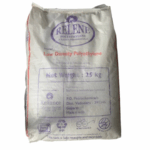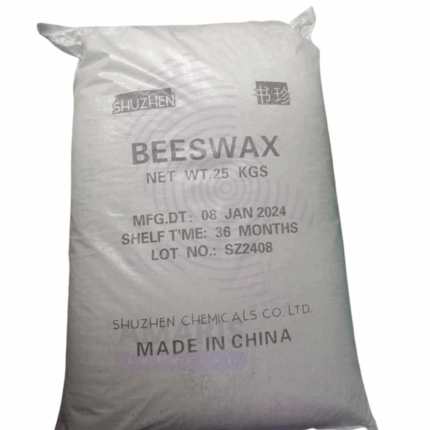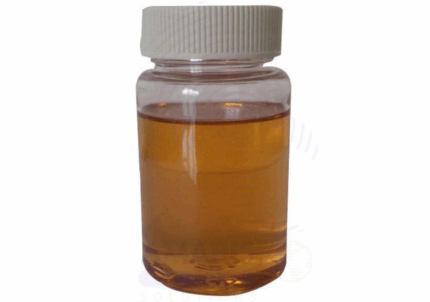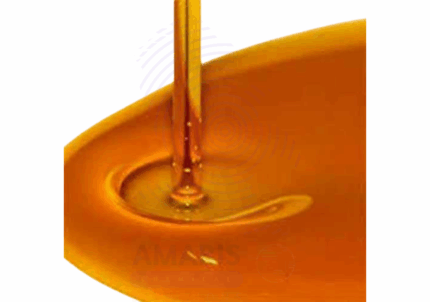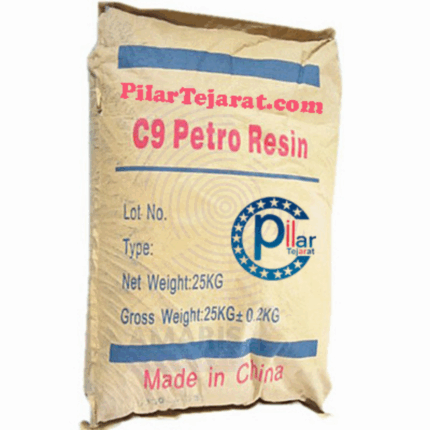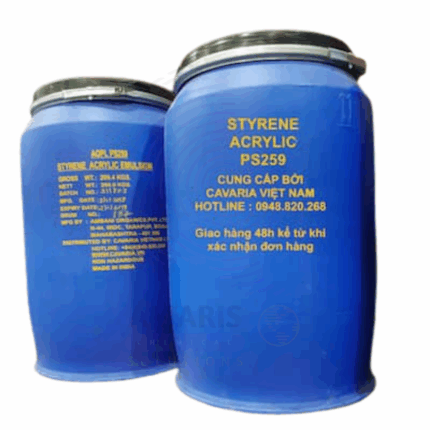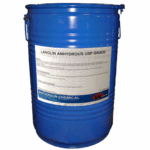
Lanolin Anhydrous
$ 15.45 Original price was: $ 15.45.$ 15.33Current price is: $ 15.33.
Latex
Whatsapp Order
Latex is a natural or synthetic colloidal dispersion of polymer microparticles in an aqueous medium. Natural latex is harvested from rubber trees (Hevea brasiliensis) and appears as a milky fluid rich in rubber particles suspended in water. Synthetic latexes are produced from various monomers such as styrene-butadiene or acrylics. Latex exhibits excellent elasticity, flexibility, and adhesive properties. It is widely used in manufacturing gloves, balloons, coatings, adhesives, paints, and various molded products. Its film-forming ability, water resistance, and durability make it a versatile material across industries.
Category: Binders/Resins
Tags: Latex, Liquid Rubber, Natural Latex, Paints & Coatings, Synthetic Latex, Water-Based Emulsion
Description
Table of Contents
Toggle
Latex
Primary Uses
- Medical and Healthcare
- Manufacturing of disposable gloves, catheters, and medical tubing due to its flexibility, barrier properties, and comfort.
- Used in wound dressings and adhesives.
- Rubber Products Manufacturing
- Production of balloons, condoms, elastic bands, and rubber threads.
- Used in foam rubber products such as mattresses and pillows.
- Adhesives and Coatings
- Key ingredient in natural rubber adhesives for bonding paper, wood, fabric, and other substrates.
- Used in latex paints and coatings for water resistance and elasticity.
- Textiles and Footwear
- Employed as a binder in textile coatings and carpet backing.
- Used in shoe soles and protective covers.
Secondary Uses
- Arts and Crafts
- Used for making molds, masks, and special effects in theater and film due to its flexible film formation.
- Construction Industry
- Incorporated in concrete additives and sealants to improve water resistance and flexibility.
- Household Products
- Found in household gloves, sponges, and elastic bands.
KEY PRODUCT FEATURES
1. Basic Identification Attributes
- Chemical Name (IUPAC): Poly(cis-1,4-isoprene) for natural latex; varies for synthetic latex
- Common/Trade Name: Latex; Natural Rubber Latex; Synthetic Latex
- CAS Number: 9006-04-6 (natural rubber latex)
- HS Code: 4001.10.00 (natural rubber latex)
- Synonyms: Rubber latex; Natural latex; Synthetic latex
2. Physical & Chemical Properties
- Physical State: Milky liquid (dispersion)
- Color & Odor: White to pale yellow; characteristic rubber odor
- Solubility: Insoluble in water; stable colloidal dispersion
- pH: Typically 6.5–7.5 (natural latex)
- Viscosity: Variable depending on formulation
3. Safety & Hazard Attributes
- GHS Classification: May cause skin sensitization (allergic reactions) in sensitive individuals
- Toxicity: Low toxicity; allergenic potential due to proteins in natural latex
- Exposure Limits: No specific limits, but caution advised for sensitized individuals
4. Storage & Handling Attributes
- Storage Conditions: Store in cool, dry place away from direct sunlight and heat to prevent coagulation
- Container Type: Stored in sealed drums or tanks designed for colloidal suspensions
- Shelf Life: 6-12 months under optimal conditions
- Handling Precautions: Avoid prolonged skin contact; use protective gloves especially for those with latex allergy
5. Regulatory & Compliance Attributes
- Complies with FDA and EU standards for medical-grade latex products
- Subject to regulations on allergen labeling for consumer safety
6. Environmental & Health Impact
- Biodegradability: Natural latex is biodegradable; synthetic varies
- Ecotoxicity: Generally low, but waste disposal should follow local environmental regulations
- Bioaccumulation: Not applicable
- Carcinogenicity/Mutagenicity: Not classified
SAFETY HANDLING PRECAUTIONS
Safety Handling Precautions
- PPE Required: Gloves recommended; respiratory protection if aerosolized latex particles are present
- Handling Guidelines: Use in well-ventilated areas; avoid aerosolizing latex particles to reduce allergy risk
- Storage Measures: Keep containers tightly closed and protected from temperature extremes
First Aid Measures
- Inhalation: Move to fresh air if respiratory irritation occurs
- Skin Contact: Wash with soap and water; seek medical attention if allergic reaction develops
- Eye Contact: Rinse thoroughly with water; seek medical advice if irritation persists
- Ingestion: Seek medical advice; generally low toxicity
Firefighting Measures
- Fire Hazards: Combustible material; produces dense smoke when burned
- Extinguishing Media: Use water spray, foam, or dry chemical extinguishers
- Special Precautions: Wear full protective gear and self-contained breathing apparatus
- Hazardous Combustion Products: Carbon monoxide, carbon dioxide, sulfur oxides, and other toxic fumes
Related products
Beeswax
Beeswax is a natural wax produced by honeybees of the genus Apis. It is secreted by worker bees from specialized glands and used to build honeycomb cells. Beeswax is a complex mixture of esters, fatty acids, and hydrocarbons, characterized by a pale yellow to brown color, a pleasant honey-like aroma, and a firm yet pliable texture. It has excellent emulsifying, binding, and protective properties, making it widely used in cosmetics, pharmaceuticals, food, and industrial applications. Beeswax is prized for its natural origin, biodegradability, and skin-friendly characteristics.
Eagle Homopolymer
Eagle Homopolymer 510/50 50% is a high-purity homopolymer solution, typically referring to polyvinyl alcohol (PVA) or a similar water-soluble polymer supplied at 50% concentration. This product offers excellent film-forming, adhesive, thickening, and stabilizing properties, making it versatile in applications such as adhesives, textile sizing, paper coating, and packaging. The homopolymer’s controlled molecular weight and solution viscosity provide consistent performance and ease of handling. The 50% aqueous solution form facilitates easy mixing and incorporation into various formulations.
Hycryl 77
Hycryl is a specialized acrylic copolymer resin designed primarily for industrial and cosmetic applications. It appears as a white to off-white powder or granules with excellent film-forming, adhesive, and thickening properties. Known for its compatibility with a wide range of solvents and plasticizers, Hycryl 77 provides excellent clarity, flexibility, and durability in coatings, adhesives, and personal care formulations. Its balanced molecular weight and functional groups enable it to deliver strong binding and aesthetic properties in both aqueous and solvent-based systems.
Linseed Oil Alkali Refined
Linseed Oil Alkali Refined is a vegetable oil extracted from flax seeds and then refined using alkali treatment to remove impurities, free fatty acids, and gums. This refining process enhances the oil’s stability, color, and odor, making it suitable for industrial, artistic, and manufacturing uses. It is a drying oil known for its excellent film-forming properties, quick drying time, and good adhesion to surfaces. Alkali refined linseed oil is widely used in paints, varnishes, inks, and as a raw material in chemical industries.
Long Oil
Long Oil refers to oils with a high content of unsaturated fatty acids, particularly linoleic and linolenic acids, commonly derived from drying oils such as linseed, soybean, or safflower oil. These oils have extended drying times and are used in various industrial applications where slow curing and flexible film formation are desired. Long oil is a key component in producing long oil alkyd resins, which are widely used in coatings, paints, varnishes, and printing inks due to their excellent adhesion, flexibility, and durability.
Medium Binder
Medium Binder is a versatile adhesive and binding agent formulated to enhance cohesion, strength, and durability in various industrial and construction applications. It improves the bonding properties between different materials, providing a reliable and consistent bond that resists environmental degradation. Medium Binder is suitable for use in composites, coatings, and concrete formulations, optimizing performance and structural integrity.
Petroleum Resin C9 Hydrocarbon
Petroleum Resin C9 Hydrocarbon is a thermoplastic hydrocarbon resin derived from the C9 fraction of petroleum cracking. It is a tackifying resin with excellent compatibility with various polymers, especially in adhesives, paints, rubber, and coatings industries. Known for its good color stability, fast curing, and strong adhesion properties, C9 Petroleum Resin enhances product performance in many industrial applications.
Styrene Acrylic
Styrene Acrylic is a copolymer emulsion combining styrene and acrylic monomers, widely used as a versatile binder in coatings, adhesives, and construction materials. It offers excellent film-forming properties, adhesion, water resistance, and durability. This product enhances the performance and longevity of paints, sealants, textiles, and paper coatings, with flexibility for both indoor and outdoor applications. Styrene Acrylic emulsions are designed to meet stringent industrial and environmental standards.


 Preservatives(food)
Preservatives(food) Flavor Enhancers
Flavor Enhancers Acidulants
Acidulants Sweeteners
Sweeteners Antioxidants
Antioxidants Colorants(food)
Colorants(food) Nutraceutical Ingredients (food)
Nutraceutical Ingredients (food) Nutrient Supplements
Nutrient Supplements Emulsifiers
Emulsifiers
 Collectors
Collectors Dust Suppressants
Dust Suppressants Explosives and Blasting Agents
Explosives and Blasting Agents Flocculants and Coagulants
Flocculants and Coagulants Frothers
Frothers Leaching Agents
Leaching Agents pH Modifiers
pH Modifiers Precious Metal Extraction Agents
Precious Metal Extraction Agents
 Antioxidants(plastic)
Antioxidants(plastic) Colorants (Pigments, Dyes)
Colorants (Pigments, Dyes) Fillers and Reinforcements
Fillers and Reinforcements Flame Retardants
Flame Retardants Monomers
Monomers Plasticizers
Plasticizers Polymerization Initiators
Polymerization Initiators Stabilizers (UV, Heat)
Stabilizers (UV, Heat)
 Antifoaming Agents
Antifoaming Agents Chelating Agents
Chelating Agents Coagulants and Flocculants
Coagulants and Flocculants Corrosion Inhibitors
Corrosion Inhibitors Disinfectants and Biocides
Disinfectants and Biocides Oxidizing Agents
Oxidizing Agents pH Adjusters
pH Adjusters Scale Inhibitors( water)
Scale Inhibitors( water)
 Antioxidants(cosmetic)
Antioxidants(cosmetic) Emollients
Emollients Fragrances and Essential Oils
Fragrances and Essential Oils Humectants
Humectants Preservatives
Preservatives Surfactants(cosmetic)
Surfactants(cosmetic) Thickeners
Thickeners UV Filters
UV Filters
 Fertilizers
Fertilizers Soil Conditioners
Soil Conditioners Plant Growth Regulators
Plant Growth Regulators Animal Feed Additives
Animal Feed Additives Biostimulants
Biostimulants Pesticides (Herbicides, Insecticides, Fungicides)
Pesticides (Herbicides, Insecticides, Fungicides)
 Active Pharmaceutical Ingredients (APIs)
Active Pharmaceutical Ingredients (APIs) Excipients
Excipients Solvents(pharmaceutical)
Solvents(pharmaceutical) Antibiotics
Antibiotics Antiseptics and Disinfectants
Antiseptics and Disinfectants Vaccine Adjuvants
Vaccine Adjuvants Nutraceutical Ingredients (pharmaceutical)
Nutraceutical Ingredients (pharmaceutical) Analgesics & Antipyretics
Analgesics & Antipyretics
 Analytical Reagents
Analytical Reagents Solvents(lab)
Solvents(lab) Chromatography Chemicals
Chromatography Chemicals Spectroscopy Reagents
Spectroscopy Reagents microbiology-and-cell-culture-reagents
microbiology-and-cell-culture-reagents Molecular Biology Reagents
Molecular Biology Reagents Biochemical Reagents
Biochemical Reagents Inorganic and Organic Standards
Inorganic and Organic Standards Laboratory Safety Chemicals
Laboratory Safety Chemicals Specialty Laboratory Chemicals(Special Laboratory Equipment)
Specialty Laboratory Chemicals(Special Laboratory Equipment)
 Demulsifiers
Demulsifiers Hydraulic Fracturing Fluids
Hydraulic Fracturing Fluids Scale Inhibitors(oil)
Scale Inhibitors(oil) Surfactants(oil)
Surfactants(oil) Drilling Fluids
Drilling Fluids
 Dyes and Pigments
Dyes and Pigments Bleaching Agents
Bleaching Agents Softening Agents
Softening Agents Finishing Agents
Finishing Agents Antistatic Agents
Antistatic Agents
 Admixtures
Admixtures Waterproofing Agents
Waterproofing Agents Sealants and Adhesives
Sealants and Adhesives Curing Compounds
Curing Compounds Concrete Repair Chemicals
Concrete Repair Chemicals Anti-Corrosion Coatings
Anti-Corrosion Coatings
 Surfactants(cleaning)
Surfactants(cleaning) Builders
Builders Enzymes
Enzymes Solvents (Cleaning)
Solvents (Cleaning) Fragrances
Fragrances
 Electronic Chemicals
Electronic Chemicals Catalysts
Catalysts Lubricants
Lubricants Photographic Chemicals
Photographic Chemicals Refrigerants
Refrigerants Automotive chemicals
Automotive chemicals Pyrotechnic Chemicals
Pyrotechnic Chemicals
 Biodegradable Surfactants
Biodegradable Surfactants Bio-based Solvents
Bio-based Solvents Renewable Polymers
Renewable Polymers Carbon Capture Chemicals
Carbon Capture Chemicals Wastewater Treatment Chemicals
Wastewater Treatment Chemicals
 Pigments
Pigments Solvents(paint)
Solvents(paint) Specialty Coatings
Specialty Coatings Binders/Resins
Binders/Resins Additives
Additives Driers
Driers Anti-Corrosion Agents
Anti-Corrosion Agents Functional Coatings
Functional Coatings Application-Specific Coatings
Application-Specific Coatings
 Fresh Herbs
Fresh Herbs Ground Spices
Ground Spices Whole Spices
Whole Spices Spice Blends
Spice Blends Dried Herbs
Dried Herbs
 Leavening Agents
Leavening Agents Dough Conditioners
Dough Conditioners Flour Treatments
Flour Treatments Fat Replacers
Fat Replacers Decoratives
Decoratives Preservatives(baking)
Preservatives(baking)
 Plasticizers & Softeners
Plasticizers & Softeners Reinforcing Agents
Reinforcing Agents Adhesion Promoters
Adhesion Promoters Vulcanizing Agents
Vulcanizing Agents Antidegradants
Antidegradants Blowing Agents
Blowing Agents Fillers & Extenders
Fillers & Extenders Accelerators & Retarders
Accelerators & Retarders
